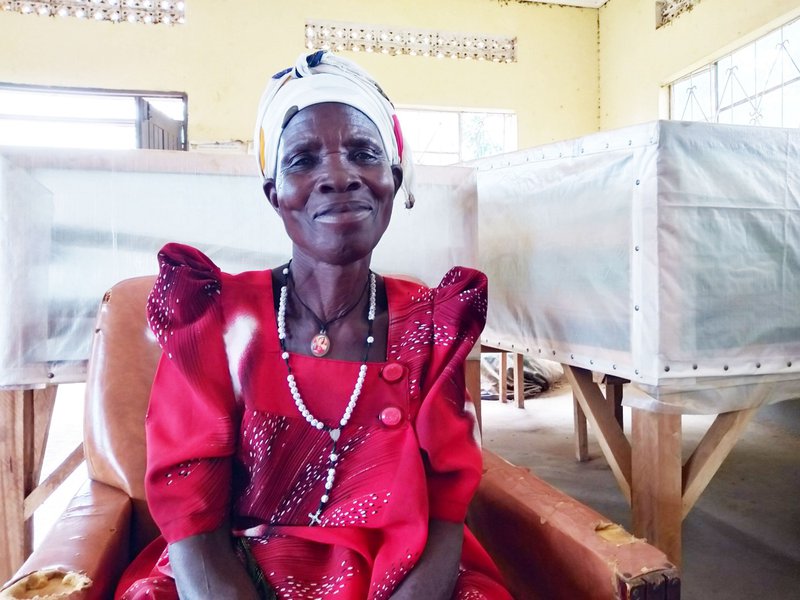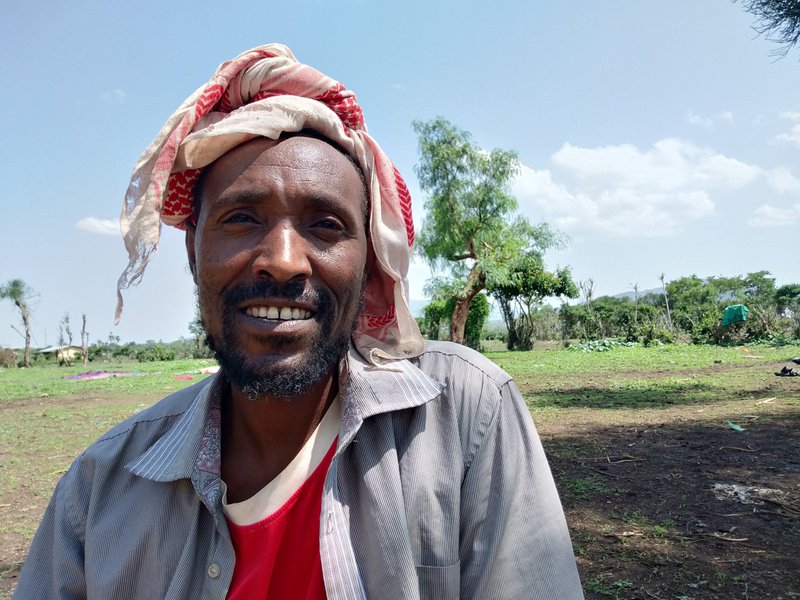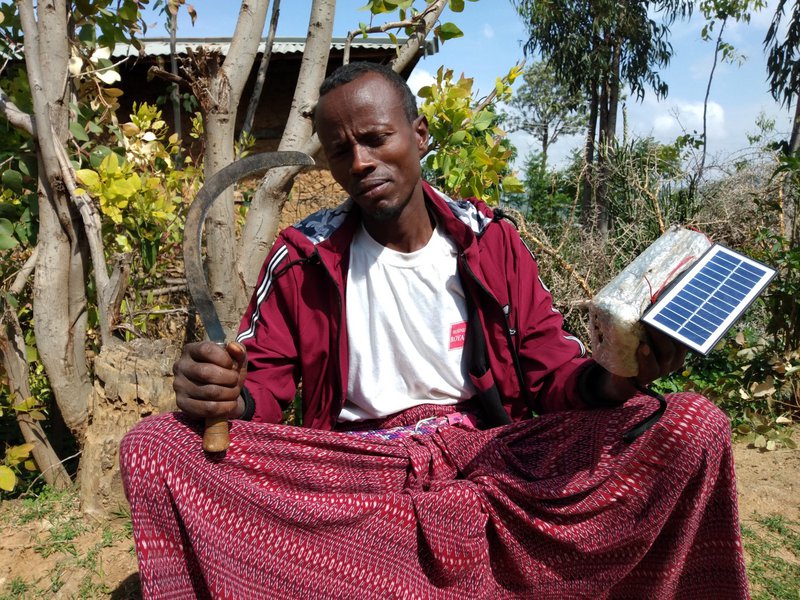The Power of Radio to Bridge the Gap of Traditional Forecasting Under a Changing Climate

Unsplash
By Emebet A. Jigssa and Collison Lorez
Contributions by ICPAC’s Climate Change Working Group
The weather forecast is a crucial component for decision making and ameliorating vulnerability of small-holder farmers in East Africa, where the land is frequently prone to floods, famine and desert locust. Farmers in East Africa continues to be exposed to extreme climate events that have increased both in frequency and intensity — negatively affect their harvests, food security, and general livelihoods.

Josephine Namisango, ICPAC July 2019
Josephine Namisango, is a small scale farmer from western Uganda. On good years, she grows maize, beans, banana and coffee; she also keeps livestock. Just like some of her compatriots in East Africa, she relies on Indigenous Traditional Knowledge (ITK) to make decisions on what to plant and when to plant every season.
“This year beans and maize failed. I will have to wait to the next season to plant again. I pray to God it will work. I am unsure of everything. Extension workers come very rarely to see us. We used to get this information from traditional knowledge but these days it doesn’t work anymore. The climate has really changed”

Umar Said, a Sorghum farmer in Ethiopia, has never received any weather and climate information from the country’s National Meteorological Agency. Faced with this challenge, most farmers and pastoralists fall back on Indigenous Traditional Knowledge. They depend on clan leaders and elders who have been a source of this knowledge for generations, through their rich experience and observation. These communities base their Indigenous Traditional Knowledge on weather forecasting pointers which include direction and strength of winds, star-moon configuration, movement of stars, nature of cloud cover, temperature settings, colour of the sky, and other phenomenon to predict the patterns of the coming season.
Traditional weather and climate forecasting is used by many indigenous communities in East Africa as a guide in making vital decisions, that help them cope and adapt to extreme climate.
Climate Change and Indigenous Traditional knowledge
Climate change is adversely affecting farming communities in East Africa. Moreover, climate change has reduced the efficiency of traditional forecasting methods. The changing climate creates a risk to the flora and fauna that ITK forecasters have come to rely on, thus endangering the practice. As a result, exposing farmers to unpredictable rainfall, drought, floods and pests. Farmers and pastoralists in East Africa, have continued their Indigenous Traditional Knowledge based forecasting methods, in progressively erratic, and difficult weather and climate patterns. According to most farmers, they are not as reliable as they used to be. The constant struggle to adapt to growing temperatures and changing rainfall patterns, means farmers need regularly updated information.
“Nowadays the climate is changing very frequently. I use the Radio to catch up with the forecast, to follow up information and then I make decisions” says Abdallah Kurcha, sorghum farmer from Ethiopia

As shown by the farmers in this story, farmers and pastoralists in East Africa have continued their ITK based weather forecasting methods in progressively erratic and difficult weather and climate patterns, leading to inaccurate predictions from time to time.
Collaborative Weather Forecasts
A survey by IGAD Climate Prediction and Application Center (ICPAC) conducted in parts of Kenya, Ethiopia and Uganda in 2019 showed that significant gaps exist in provision of climate information that effectively focus on the needs of farmers and pastoralists. In peri-urban parts of the region, traditional practices are being abandoned, while location specific forecasts are still lacking. However, the survey showed that communities generally trust ITK forecasts more than the scientific one. This is largely attributed to the fact that forecasts provided by the National Meteorological and Hydrological Services (NMHs) have a national scale and do not address finer details required at sub-national levels. Additionally, climate prediction and weather forecast updates may appear difficult to comprehend. It is however worth noting that some NMHSs in the region are piloting initiatives that address these gaps that need to be scaled up.
Today, meteorology is increasingly advanced and thus reliable predictions can be generated based on the capacity of contemporary climate radar and related tools. This can be taken advantage of if only the government, local media and community leaders encourage information sharing and initiate robust preparedness strategy for severe climatic events.
Researchers within the region (Ouma et al, 2013; Radney, Maren et al, 2019) have established that collaborations between ITK forecasters and Scientists in some parts of the region have been successful in generating early warning information. ICPAC is demonstrating how collaboration between the media and the meteorological agencies such as the National Meteorological Authority of Ethiopia, Uganda National Meteorological Authority and the Kenya Meteorological Department, ITK experts, community members and sector experts at the sub-national level, can be used to jointly generate information for end users’ consumption. Most importantly, this does not mean dismissing the ITK option.
Content and Style of weather and Climate Information
At a basic level, weather and climate information or any other information, comprises two components: content and style. Content is what is provided by the meteorological department — the information the meteorological department is seeking to convey to the end users. Style is the way in which the selected channel present that information — the language type, organization, and other details of the report.
East Africa Radio Content and Style
Surveys conducted by ICPAC in the region, show that radio is the ideal medium to reach end users. Flood and heavy rain are not only news pieces for small-holder farmers. Their livelihood depends on the land they plough and inadequate rains, adversely affect them. This calls for added emphasis on the importance of clear content and attractive style by both the meteorological authority and the radio station broadcasting. Weather and climate comprise a very broad subject which cannot be covered in a few radio shows. It is necessary for the meteorological department to present clear and succinct content to the radio station. The station may use local languages and make the radio shows attractive to broaden listenership, also including the end users in the production to promote ownership of the radio shows. Most significantly, the language used in the shows should be simple and easy to apply locally.
Kenya today, has over 170 radio stations, offering high access in both rural and urban areas. Statistics indicate that 98 percent of the adult population have access to radio. While the national radio station in Ethiopia reaches close to 45 million people through its network across the country with widely spoken languages of Amharic, Oromifa, Tigrinya, Somali Afar and English. In Uganda approximately 91 percent of the population is currently reached through over 200 radio stations.
Conclusion
It is obvious that climate change is adversely affecting individual farmers and pastoralists like Namisango and Said. The end users need all aggregated information to make decisions and survive the consequences. Their livelihood depends on the informed decisions made based on the forecasts they receive. A clear collaboration between the meteorological authorities, ITK experts, and the media, specifically radio, in regular packaging of content and style of weather and climate information would help farmers in East Africa make informed decisions on a season to season basis.
References
ACREI / ICPAC, End User Climate Information survey (Ethiopia, Uganda, Kenya) (July, 2019)
Radney, Maren et al, Indigenous knowledge for seasonal weather and climate forecasting across East Africa, 2019
BBC Media Action. Kenya — Media Landscape Report, November 2018. https://www.communityengagementhub.org/wp-content/uploads/sites/2/2019/09/Kenya-Media-Landscape-Report_BBC-Media-Action_November-2018v2.pdf
Internews. Ethiopia Media and Telecoms Landscape Guide. https://internews.org/resource/ethiopia-media-and-telecoms-landscape-guide
